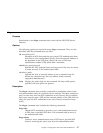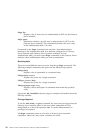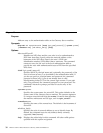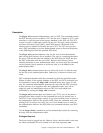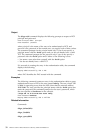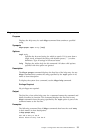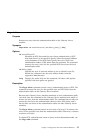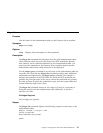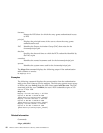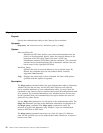
dfsgw delete
Purpose
Removes an entry from the authentication table on the Gateway Server
machine
Synopsis
dfsgw delete -id networkID:userID [-af address_family][-help]
Options
-id networkID:userID
Identifies an NFS client and the user whose authentication to DCE
from that client is to be canceled. Specify either the network address
or the hostname of the NFS client. Specify the user’s UNIX user
identification number (UID) rather than the username. The command
removes the user’s entry for the specified NFS client from the local
authentication table.
-af address_family
Specifies the style of network address to use to identify hosts. By
default, the command uses the only address family currently
supported, inet (Internet).
-help Displays the online help for this command. All other valid options
specified with this option are ignored.
Description
The dfsgw delete command cancels a user’s authenticated access to DFS. The
command removes the entry for the specified user and NFS client from the
authentication table on the Gateway Server machine.
Because each Gateway Server machine maintains its own authentication table,
you must issue the command on the Gateway Server machine from which to
remove an entry from the authentication table. The command has no effect on
entries the user has in the authentication table for other NFS clients, and it
has no effect on entries in the authentication tables on other Gateway Server
machines.
The dfsgw delete command returns an exit value of 0 (zero) if it removes the
entry for the specified user from the authentication table. Otherwise, it returns
a nonzero exit value.
To obtain DCE credentials and create an entry in the authentication table, use
the dfsgw add command.
Chapter 5. Configuration File and Command Reference 35



